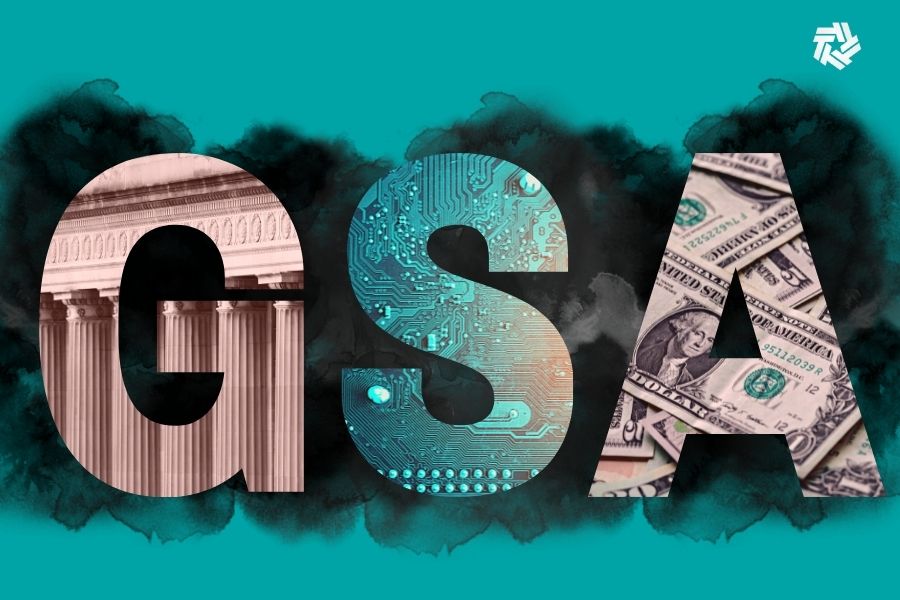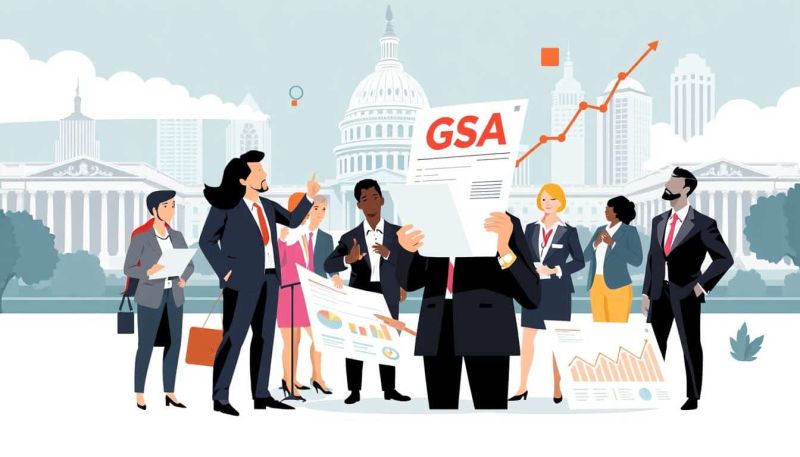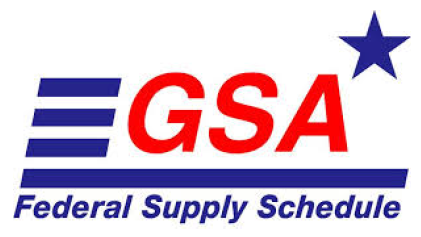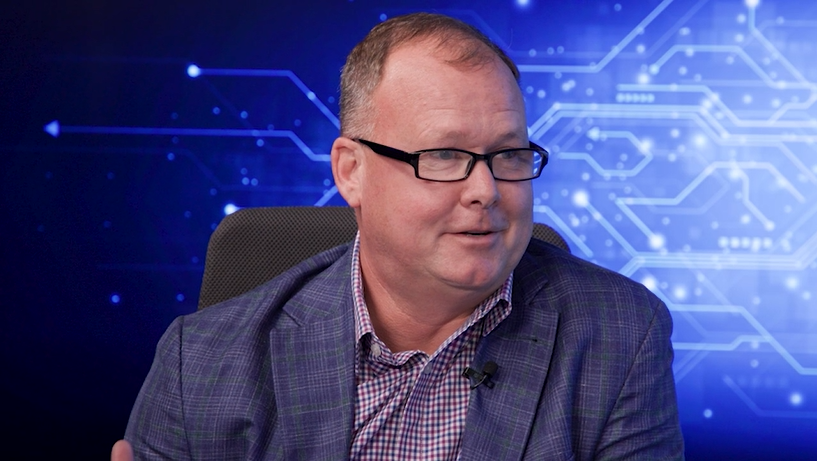President Donald Trump’s “Eliminate Waste and Save Taxpayer Dollars by Consolidating Procurement” executive order brings some old procurement practices back into fashion. Over the next 60 to 90 days, agencies, OMB and the GSA administrator have a lot of work to do to centralize procurement of common items back in GSA. To understand what this means for the procurement system, Federal News Network’s Terry Gerton spoke with Emily Murphy, former GSA administrator and current senior fellow at the George Mason University Baroni Center for Government Contracting on the Federal Drive with Tom Temin.
Terry Gerton: Emily, the effort to centralize procurement in GSA has been on again and off again for decades. You had an inside seat as the administrator of GSA. What is it that makes this vision so hard to actualize?
Emily Murphy: So I think that there are a lot of challenges with centralizing procurement and they go back to sort of the history of why GSA existed. If you remember until 1949, there was no GSA. Agencies did things separately. President Truman had the idea that in consolidating things would get a lot efficiency, but those efficiencies became pretty stagnant over the years. And by the 1980s, it was joked that GSA stood for ‘Going Slowly Always.’ So the reforms in the 1990s, GSA lost control of a lot of the procurement. It had to compete for things and it became really efficient and effective, but we lost sort of the government’s leverage buying power in a lot of cases as well. I think this is a challenge right now to try and figure out how we can leverage the government’s buying power, get those efficiencies, but maintain all the things that I think makes GSA a really great agency and a great buying activity.
Terry Gerton: So what is it that makes this a good time to try this centralization again?
Emily Murphy: Well, there’s an enormous appetite right now for procurement reform. If you’re looking at the Hill, you’ve got Senator [Roger] Wicker (R-Miss.) has got his FORGED Act. We’re hearing more and more conversations about how we need to be evolving procurement. We are seeing more use of other transactions authorities (OTA) and commercial solutions openings (CSO). So there’s this enormous appetite out there to do it better and there’s a huge push to save money. And there’s, I think, a recognition that centralizing buying could make things less expensive for the government, but it could also make things more expensive for companies that are trying to do business with the government because when I was running GSA, one of the biggest complaints we got was, we spend all our time chasing RFIs, chasing bids and proposals, competing for duplicative contract vehicles and that costs companies money. And the companies pass those costs along to the government. If it’s a cost-based contract, it goes into their overhead costs. If it’s a firm fixed price, it’s definitely being reflected in the underlying price. So this is a chance to try to remove some of that burden from those companies, but it also does create a sort of winner-takes-all situation so that if you have one of those contracts, you’re going to be in a much better spot going forward.
Terry Gerton: Right. So let’s talk about what it actually is going to mean to meet the goals of this executive order, right? Agencies have 60 days from March 20th to submit their consolidation plans to GSA. What would you expect to see when they submit those plans?
Emily Murphy: I think the first thing they’re going to go through and distinguish is what they have that falls into those 10 common categories that are called out by the executive order that are the category management categories. So what there is suitable for consolidation and what isn’t. And that’s the first distinction they’re going to make. And I suspect that there are some cases where even though something’s like, I’ll give an example, pharmaceuticals are listed as one of the common categories, it might be something that VA or DoD decides that they have more expertise in and it doesn’t make sense to consolidate. So I think that there are going to be a lot of discussions around that. I think there are going to be discussions around personnel. Are the people going to move with the procurements? How about the funding for those people? Is it going to come along with them or is GSA going to retain a fee-based structure and charge for those procurements going forward? So and then contract writing systems. Which contract writing system are they going to use? How are you going to communicate things back and forth? How are the financial systems going to communicate with each other? So there are a lot of issues that have to be addressed in those plans.
Terry Gerton: Let’s talk about the personnel for a minute because GSA had some folks that took the ‘Fork in the Road’ option and they’re downsizing themselves. How really could you set up personnel, whether they stay in the agencies, will they transfer to GSA? What do you really think is reasonable there?
Emily Murphy: I don’t know if you noticed but GSA actually reopened the ‘Fork in the Road.’ And so they’ve got it open again through, I think, the middle of April. So I think that there is an expectation that at least some of the 1102s, the contract specialists out there, might be picked up by GSA. I think that even within GSA that there’s some hope that some of the contract specialists within the Public Buildings Service will move over into the Federal Acquisition Service to help perform the work so that we won’t lose all of that expertise that the government has. But I think that there’s also a lot of work here and a lot fewer people who are going to be doing it. So they’re going to need to use technology and find ways to do it more efficiently in order to realize not just the savings goals, but also just the efficiency goals of people need to get stuff, the government needs to buy things in order to do its job.
Terry Gerton: Well, that probably gets to the other constraints. You mentioned the contract writing system and the financial system. All the different agencies are using different software, different technologies there. How can you imagine GSA bringing all of that together?
Emily Murphy: I think it’s actually a really interesting challenge. And if I were GSA now, I’d go to the Office of Shared Services and Performance Improvement within the Office of Governmentwide Policy. And I know that they had done some work on what were the common standards for a contract writing system. How could they in looking at financial management consolidation. And I think I’d use this as an opportunity to start moving agencies to more of a shared system or shared providers and trying to get that shared services win that we’d been looking for in the first Trump administration.
Terry Gerton: Yeah, that’s been a topic of conversation for a long time and there’s some more move towards shared services on the financial side that was in a separate EO.
Emily Murphy: Yes. And I think that what we’re seeing through a lot of the executive orders is really a commitment to shared services within the federal government. I’m curious whether or not payroll will come back as a shared service or other HR processes will also reemerge as shared services.
Terry Gerton: So let’s think a little bit more about agency strategy here because you mentioned pharmaceuticals and VA and DoD being the big buyers of pharmaceuticals. When I think of somebody like FEMA who has to buy emergency construction material, a lot of it really fast compared to somebody like the Army Corps of Engineers who knows what their construction is well in advance and can have more planned procurement. How will GSA start to normalize those different kinds of buying strategies for things like the common services and goods?
Emily Murphy: Well GSA already had identified items that it thought were appropriate for disaster response and put in place some contracts to make it easier to do that. If you recall, states and local governments already use the GSA schedules for disaster response. So they were able to use any NAICS code within the entire schedule, any special item number (SIN) within the schedules, if it’s in response to a disaster. So GSA and FEMA already have a long history of GSA providing acquisition support during a disaster and setting up contracts in advance of disasters. It is going to require some more coordination moving forward and it’s going to require some really good customer relationship management on GSA’s behalf.
Terry Gerton: I’m speaking with Emily Murphy. She’s a senior fellow at the George Mason University Barone Center for Government Contracting and the former administrator of GSA. Emily, there’s another part to this EO, which designates the administrator of GSA as the executive agent for all governmentwide acquisition contracts for information technology. That’s no small task, but what’s that really going to mean in practice?
Emily Murphy: (It) raises some questions about duplication in those large governmentwide acquisition contracts (GWACs) and this isn’t a new conversation either. If you go back to the Bush administration, GSA was at that time pushing back on the idea that NASA SEWP or NITAAC’s CIO-SP, I think at the time it might have been one or two, were duplicative of what the schedules did or what GSA’s own GWACs did. I think that this is an effort to rationalize those contract vehicles. This, by having GSA take control of that, is going to force GSA to really sit down and figure out what does it do best and what was good in other contract vehicles that we need to be keeping. It’s going to be a fascinating tail to sort of watch unfold.
Terry Gerton: Those are huge contracts.
Emily Murphy: Huge contracts. Now, one thing you’ve got going for you is that both CIOs before has been in a bit of distress for the last several years. It had so many protests. And so it seems to be stuck. And GSA is going to then have to decide does it want to push forward and get to a final award? Or does that mean the end of CIO-SP 4? SEWP 6 is still in the RFP process. So there’s also, it would be a natural point for a SEWP to be revisited. So you’d close that SEWP 5 without having a SEWP 6, or maybe you look at SEWP 6 and say it was going to do something different in terms of services. And that’s something that we want to keep and that’s going to require a lot of debate within GSA and a lot of conversations with the customers about how well do contract vehicles meet their needs.
Terry Gerton: So we’re talking about big projects, big contracts, lots and lots of, as you say, and I’m using my air quotes here, rationalization of all of these different vehicles. If you were giving the current acting GSA administrator some guidance, how would you suggest that he approach this massive undertaking?
Emily Murphy: I would suggest that there need to be conversations with the customers to make sure that they’ve really identified what those customers need. And then that rationalization needs to take place, it’s going to be a beautiful, big Venn diagram that shows where there’s overlap between contracts and where there’s some pockets of uniqueness. And are those pockets of uniqueness worth the cost of maintaining those contracts? Are they worth the costs of having 1102s dedicated to that work or is that work that they’re willing to give back to the agencies and say that falls outside of the mandatory scope that is GSA’s? I’d also, though, really encourage everyone involved in this process to not forget that they’re going to need to retrain their workforce because you’re going to be changing, in many cases, the systems they’re working on, the tools they’re working on. GSA’s been launching AI tools and other things to help their workforce be more productive. But they’re also going to be tools just on how to, if you haven’t been doing GSA schedules your entire career and you’re suddenly put into working on schedules, that’s a whole new process and it’s going to take people some time to get up to speed on it.
Terry Gerton: It’s great advice. It sounds like there’s a lot of potential for streamlining and efficiency here, but a lot to work out in the meantime.
Emily Murphy: I think there are going to be incredible savings from doing this, but it needs to be done right.
Copyright
© 2025 Federal News Network. All rights reserved. This website is not intended for users located within the European Economic Area.




